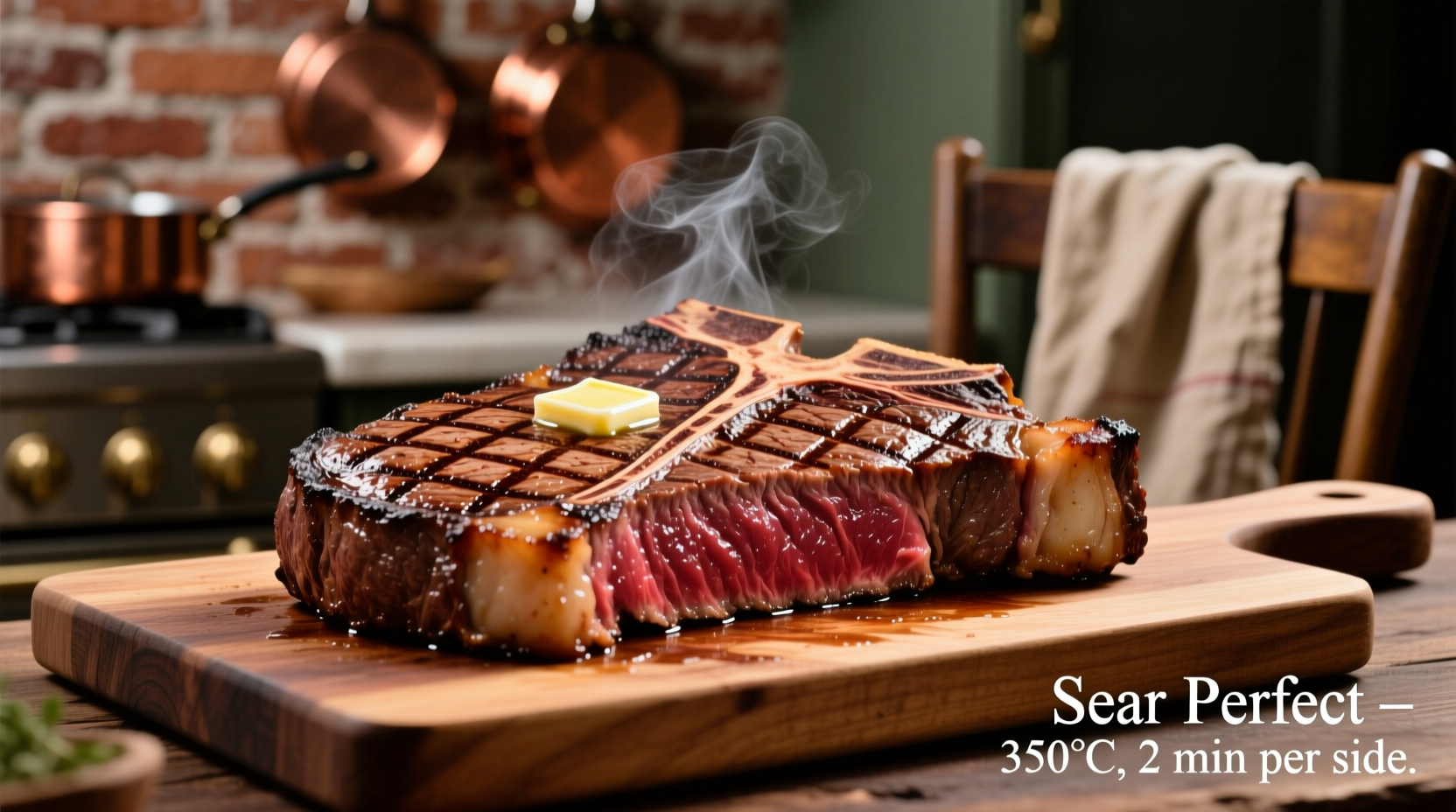Mastering the T-bone steak transforms an expensive cut into a culinary triumph. This guide delivers professional techniques honed in Michelin-starred kitchens, adapted for home cooks. You'll learn precise timing, temperature control, and the science behind perfect doneness—no guesswork required.
Why T-Bone Deserves Special Attention
The T-bone combines two premium cuts—the tender filet mignon and flavorful strip steak—separated by a T-shaped bone. This unique structure demands careful cooking to accommodate the filet's delicacy and the strip's robust texture. Unlike uniform cuts like ribeye, T-bone requires strategic heat management to prevent the filet from overcooking before the strip reaches ideal doneness.
| Doneness Level | Internal Temperature | Visual Characteristics |
|---|---|---|
| Rare | 120-125°F | Deep red center, cool throughout |
| Medium-Rare | 130-135°F | Warm red center, soft texture |
| Medium | 140-145°F | Pink center, slightly firm |
| Medium-Well | 150-155°F | Slightly pink center, firm |
Essential Equipment Checklist
- 1.5-inch thick T-bone steak (minimum 24 ounces)
- Cast-iron skillet or heavy grill grate
- Digital meat thermometer (critical for precision)
- Heavy-duty tongs (no piercing!)
- Coarse kosher salt and freshly cracked black pepper
- High smoke-point oil (avocado or grapeseed)
- Butter, garlic, and fresh herbs for finishing
Preparation: The 90-Minute Rule
Remove steak from refrigerator 90 minutes before cooking. This critical step ensures even cooking—cold meat seizes when hitting heat, causing uneven doneness. Pat thoroughly dry with paper towels; moisture prevents proper searing. Season generously with 1 teaspoon coarse salt per side, allowing 40 minutes for salt penetration. The USDA Food Safety and Inspection Service confirms proper salting enhances both flavor and texture through protein modification.
Cooking Methods Compared
Choose your method based on equipment and weather. Each technique requires precise temperature control to handle the T-bone's dual-muscle challenge.
Cast-Iron Skillet Method (Best for Control)
- Preheat skillet on medium-high 10 minutes until smoking
- Sear steak 45 seconds, rotate 90° for crosshatch sear
- Cook 4-5 minutes per side for medium-rare
- Add 2 tbsp butter, garlic, and herbs during last 2 minutes
- Flip occasionally to prevent filet overcooking
Grill Method (Best for Flavor)
- Create two-zone fire: 500°F direct heat, 300°F indirect
- Sear over direct heat 3-4 minutes per side
- Move to indirect heat until target temperature reached
- Position filet side toward cooler zone during cooking

The Resting Imperative
Resting isn't optional—it's food science. When you remove steak from heat, internal temperature continues rising 5-10°F (carryover cooking). The American Meat Science Association confirms resting allows juices to redistribute through myofibril relaxation. Cutting too soon releases up to 30% more juices. Follow this proven resting timeline:
- 1-1.5 inch steak: 8-10 minutes
- 1.5-2 inch steak: 12-15 minutes
- Cover loosely with foil—never tightly
3 Costly Mistakes to Avoid
- Overhandling: Flip only 2-3 times. Frequent turning prevents proper crust formation.
- Skipping the thermometer: Visual cues fail with T-bone's dual muscles. USDA recommends thermometers for food safety.
- Cutting too soon: Resting time varies by thickness—never less than 8 minutes for T-bone.
Temperature Troubleshooting
If your steak isn't reaching target temperature:
- Too slow: Increase heat 50°F increments. Check thermometer calibration.
- Uneven cooking: Position filet side toward cooler heat zone.
- Exterior burning: Reduce heat immediately—T-bone needs high but controlled heat.











 浙公网安备
33010002000092号
浙公网安备
33010002000092号 浙B2-20120091-4
浙B2-20120091-4